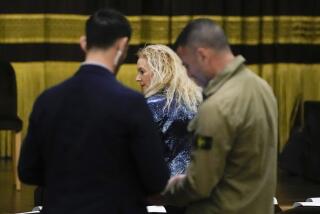How tropical storms get their names
- Share via
Reporting from Fort Lauderdale, Fla. — When it comes to storm monikers, Fiona and Gaston don’t exactly sound fierce, and neither do Hermine and Shary.
Yet all of these were on the 2010 list of tropical storm names, and the National Hurricane Center in Miami used 19 of them during the hurricane season, which ends Tuesday.
Storm names are frequently international in nature, and occasionally difficult to pronounce, because they are selected by the World Meteorological Organization, based in Geneva. The names may seem strange to some, but the organization has a method.
The agency is divided into six regions. Representatives from each suggest names to an international committee, which votes on them. The chosen names are placed on six lists, which are rotated year to year.
“They try to keep a good mix of Anglo and Hispanic names, although there are some French and some Russian names in there too,” said Dennis Feltgen, spokesman for the hurricane center.
For sensitivity reasons, names are retired if a storm is extremely deadly or costly, such as hurricanes Katrina, Rita and Wilma in 2005.
Why name storms in the first place? To make coastal residents more aware that a dangerous system might be lurking. The World Meteorological Organization says short, distinctive names are easier to remember than numbers or cumbersome latitude-longitude coordinates, which were used decades ago.
Before 1950, storms weren’t given names but were remembered after the fact based on what year they hit and how much damage they caused, such as the Galveston Hurricane of 1900.
In 1953, the hurricane center started giving storms female names. In 1977, the World Meteorological Organization took over the task of providing names and in 1979 started alternating male and female names.
More to Read
Sign up for Essential California
The most important California stories and recommendations in your inbox every morning.
You may occasionally receive promotional content from the Los Angeles Times.











